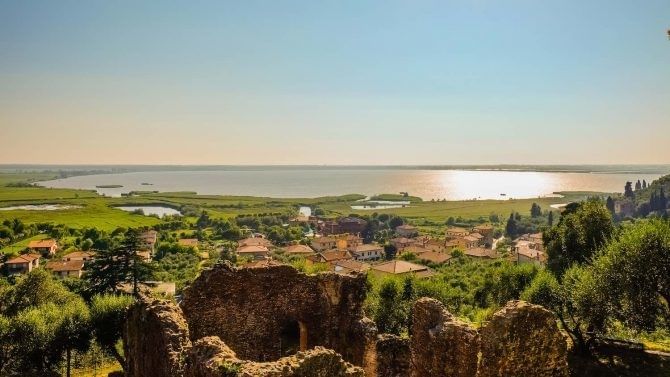23 Apr 2018
Feet on the sand and face kissed by the sun. Versilia, a corner of paradise nestled between the Apuan Alps and the sea, is able to offer much more than the beauty of its beaches and the warmth of its waters. The sea and the mountains are the setting for typical old villages and allow numerous possibilities for outdoor cultural activities as an alternative to seaside tourism, shopping for high fashion shops and the typical nightlife of this coastal area.
VIAREGGIO, FOR EVERY SEASON
During the summer holidays, in addition to the spacious golden beaches and the splendid Tyrrhenian Sea, a walk is very pleasant along the promenade of Viareggio full of fashion boutiques, stopping to enjoy an ice cream or tasting the local specialties in the luxurious restaurants near the bathing facilities; but Viareggio has many attractions that can be visited during the rest of the year. Torre Matilda was part of the Viareggio Castle complex and was used to protect the coast from pirates and enemies, and then in the course of the centuries it was used as a prison. Villa Borbone is a beautiful nineteenth-century building built for Maria Luisa di Borbone, Duchess of Lucca; the building is surrounded by a large park where you can enjoy an evocative walk through gardens and woods. The Museum of Carnival, testimony to the importance of the Viareggio Carnival, is structured on two floors: in the first one there are paths where you can admire the most famous masks over the years and the winners, as well as the history and origins of Carnival; in the second one there is a real educational workshop where you can try your hand at the construction of some carnival models. Walking through the city, the Art Nouveau style of many buildings will strike your attention.
FORTE DEI MARMI BETWEEN SEA, SHOP WINDOWS AND PINE FORESTS
Here the great protagonist is the coastline too, composed of 5 km of luxurious and well equipped seaside beaches. After the scorching sun, a walk in the cool pinewood “Versiliana” is recommended, ideal for sports and for visiting the villa inside where D’Annunzio stayed and where today the best writers and contemporary artists meet annually. A must-see is certainly the Fortino, which gives its name to this place, which is a structure that was used to store the material extracted from the marble quarries, nowadays it is the seat of the Museum of Satire. During the day, you can’t miss a little shopping among the high fashion shops in the city center and the typical market of Forte dei Marmi, stationed in the characteristic ring square. In the evening, instead, Forte dei Marmi is the fulcrum of Versilia’s nightlife: you can have a drink in the elegant beachfront lounges, dine in a refined restaurant in the center and have fun in the numerous beach clubs.
TORRE DEL LAGO PUCCINI AND MASSACIUCCOLI ROMANA
This town takes its name from the great Italian opera artist Giacomo Puccini, who chose his home here between the Tyrrhenian coast and the shores of Lake Massaciuccoli. Here, every year, the opera master is celebrated with a great musical concert, the Puccini Festival. Around this stretch of water, there is the Migliarino nature reserve where there is a remarkable variety of flora and fauna to see absolutely for nature lovers. Beyond the lake compared to Torre del Lago, instead, there is Massaciuccoli Romana: an archaeological area where you can admire the remains of some buildings of ancient Rome and the old Roman baths.
THE MARBLE QUARRIES AND CINQUE TERRE
The Apuan Alps complete the marvelous blue frame of the Tyrrhenian Sea, which are covered with florid nature and rich in marble basins; here, in fact, there are the famous Marble Quarries of Carrara, point of extraction of the finest and sought marble in the world, which can be visited thanks to guided tours and the Marble Museum. Immediately after Carrara, towards Liguria, and after the gulf of La Spezia, the incredible show of Cinque Terre begins, a jagged stretch of coast where small villages are settled by colorful houses suspended above the sea, that still retain the charm of the seafaring tradition. Cinque Terre are Monterosso al Mare, Vernazza, Corniglia, Manarola and Riomaggiore, all immersed in a hilly landscape overlooking the sea full of scents; you can also visit them from Versilia, thanks to the boats that leave daily from the piers of Marina di Carrara, Marina di Massa, Forte dei Marmi, Marina di Pietrasanta and Viareggio.
LUNIGIANA AND GARFAGNANA, WHERE THE MOUNTS CUSTODY HIDDEN GEMS
These two geographical areas located near the Apuan Alps extend in the provinces of Massa-Carrara and Lucca, behind the Versilia coast. These two areas are home to many medieval villages that preserve a very ancient history and charm, such as the towns of Filetto, Mulazzo, Montereggio, Fivizzano, Fosdinovo, Pietrasanta (called “the little Athens”), Stazzema, Massarosa, Seravezza and many others, each one with its own castle (almost all belonging to the Malaspina dynasty) and almost all with museums that tell the many local traditions. Next to these characteristic villages, there are breathtaking views to discover thanks to the conformation of the territory made of green hills and wide valleys, which welcome several nature reserves and caves to visit, such as Grotta del Vento and Antro del Corchia.

